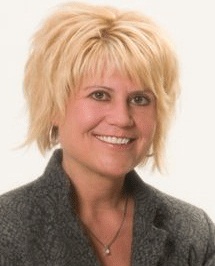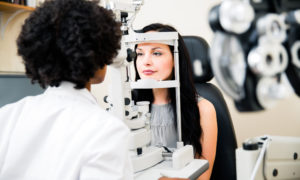By Kim Castleberry, OD,
and Lorie Lippiatt, OD
Now is decision time: choosing cloud-based versus client-server EHR systems. Here are key questions to consider as you take your EHR system to the next level.
We are passionate about cloud-based EHR. The technology offers anytime/anywhere access, automatically occurring updates that require no in-office support and no need for day-to-day IT maintenance. All this adds up to a more productive, cost-efficient practice.
Some of our colleagues don’t understand why we are so passionate about cloud-based technology. We think that’s because they aren’t thinking about the total picture. They don’t have time to fantasize about what “could be,” so they are content with what they have. That’s why we want to show you what you stand to gain as this new movement in technology takes hold. Here are key characteristics about cloud-based EHR to consider when looking for a new system.
Here are key characteristics about cloud-based EHR to consider when looking for a new system.
The Power of Cloud-Based EHR Connectivity
Cloud-Based EHR Will Allow Connectivity to Patient Portals for:
• Patient communications
• Scheduling and registration
• Product ordering information
• Rx and records accessibility
• Patient education
Cloud-Based EHR Will Allow Connectivity to Provider Portals for:
• Diabetic communications
• High-risk medication communications
• Referral communications
• Record and image sharing
• Clinical decision support
• ICD sections with image and auto-population of evidence-based diagnostic/treatment protocols.
• Rx lens/option recommendations based on patient lifestyle questionnaires.
• Automated ordering, interpretation of, and reports for special testing.
Cloud-Based EHR Will Allow Connectivity to Vendor Portals for:
• Automated orders from vendor e-catalogs.
• Elimination of ordering Rx’s that don’t exist
• Electronic transmission of orders.
So What Is the Ideal Practice Management and EHR Solution Anyway?
We will admit, this is a loaded question. Our standards are sky high, and we need solutions that enhance the doctor’s lifestyle and the patient’s life. We need information systems that give us more time with our families and the help us offer better patient care.
To do that, we think we need the following:
• Automatic claims submission without need of staff intervention by the end of the day.
• Post-claim submission support for rejected and unpaid items to reduce onsite-staffing cost.
• Automated patient notifications for real time lab job status, product delivery and patient satisfaction.
• Automatic notification to patients of lab breakage with updated delivery time.
• Patient portal for 24/7 practice availability
o Online registration pushing data to EHR
o Scheduling
o Ordering and product information
o Requests and secure communications
o Payments
o Rx/records access
o Patient education
• Clinical decision support at the point-of-care including the ability to see images and treatment options to help manage problems.
• Functionality that will alert the doctor that that 400mg of Plaquinil puts the patient at high risk at her body weight, so it automatically orders Visual Field and OCT, then sends information to the patient portal about FDA guidelines for special testing, and then the physician prescribing Plaquinil is automatically notified when the patient is cleared for another year of medication.
• E-transmission of receipts, reports, records, Rx’s, education and health information from the practice management system and EHR: Ditch the fax machine and printer!
Client-Server Solutions Can’t Meet These Demands
Traditional legacy practice management and EHR software solutions no longer suffice in today’s technology-rich environment, even if you host them in the cloud. Because most current “legacy” solutions are client/server solutions, meaning they are on the ground, there is little opportunity for interoperability with cloud-based applications. Business and office demands are changing, and integrated services, such as real-time business analytics, are necessary to operate a profitable optometric office. In addition, billing and coding is an area that costs practices a lot of time and money due to incorrect CPT/ICD matches, use of outdated CPT codes and CPT codes that are incorrectly billed together on the same day. We want to get rid of these problems.
Real-time web services are available to assist with these issues, but it’s time-consuming if the process isn’t integrated, so not many take advantage. Other features that are important outside “traditional” software are tools like patient notifications by text, e-mail or through a secure patient portal. We also want integrated patient educational materials, tailored to a patient’s specific needs and based on lifestyle and customized report generation. If that isn’t automated, who’s going to take care of it? It’s unrealistic to say a practice has that type of manpower.
We need software that makes it easier for us to connect with our patients, and for them to connect with our practice. Enhanced web services that are directly integrated in new technology allow for that. They will make our jobs more efficient, allow us to provide better patient care, and take the pain of exam form documentation away.
Create a Plan of Action
Here’s what we did to prepare to migrate to the cloud. We suggest this as an action plan you can use, too.
Enhance Efficiency
• Get rid of all filing cabinets in the office. Scan and shred all documents to the cloud.
• Collect e-mails from patients to automate log-in names for patient portal/communications
• Collect patient mobile phone numbers to push information and notifications to mobile
• Get patient photos linked to demographic information to get ready for image recognition.
Enable Electronic Migration
• E-transmit everything that the legacy system allows. Lab orders and insurance claims.
• Install a primary and back-up internet connection.
• Deploy web banking and bill paying for personal and business activities.
• Transition all insurance companies to electronic funds transfer.
• Deploy electronic remittance for posting insurance payments.
• Utilize online lab orders for optical orders.
Do More Work “In the Cloud”
• Encourage e-mail communications with patients with current technology.
• Get staff’s head “in the cloud” encouraging utilization of current cloud solutions for office activities.
• Evaluate current and new options for cloud-based solutions culling out “Cloud-Hosted” Client/server software.
What about Functionality? What Will it Look Like and When Can We Have It?
In a word: Connected. The functionality in future EHRs will center on cloud-based solutions, leading to greater all-around functional capacities. Do you realize how significant it is that being in the cloud will allow physicians to access their patient data from any device and any location, provided there is an internet connection? That’s huge! Secure patient portals will allow for completion of health-related information prior to the office visit, and upon review, will auto-populate the EHR, thus reducing the amount of documentation time for both doctors and staff. Real-time CPT/ICD coding edits will occur prior to insurance claim submissions, for example, which will eliminate most errors that currently occur in the insurance billing process.
Probably the most significant functionalities will be the simplification of the physical eye exam documentation process. Legacy EHRs have proven to be very “click” intensive, with a long learning curve as it relates to the documentation process. Future EHR’s will simplify this documentation process through the use of eye-animation tools that will drive the diagnosis. Imagine if the work that you do in one part of the system actually populated all throughout, filling out data and taking that burden off of you. It’s like the system is working with you and actually making your job easier. We like to think of it as a “Smart Touch”: where a single selection can document exam findings, diagnosis, treatment, orders, special testing, patient education based on current evidence-based guidelines and coding based on ReimbursemntPlus CodeSAFE. The pain of completing documentation manually is eliminated and the physician is able to focus on treating the patient, rather than spending all his time documenting findings in the chart. Finally, we will have an EHR so easy that a fill-in doctor can use it!
Another problematic area in legacy systems centers on the issue of “cloning.” This is used as a shortcut around the frustrations of the documentation process. Sections, in some cases complete examination findings, are “copied forward” to ease the pain of documentation. It may seem like it simplifies things a bit, but it’s not the way it should be done! Future EHRs will reduce the risk of cloning by simplifying the documentation process. Follow-up visits will automatically change the treatments based on status and severity.
In general, improper data entry will be reduced through the appropriate use of “alerts,” thus eliminating meaningless data that is often entered in an EHR by simply hitting the wrong key on the computer. Legacy programs have always been so click intensive, that errors are easy to make. When you reduce the number of clicks, you reduce the number of errors–they go hand-in-hand. And customization has always been limited with legacy solutions. Customizing to meet a specific doctor’s needs is minimal because of data field constraints. The new technology will make customization easy.
EHR Wish List: Available in Next Six Months
• Patient Portal: Healthcare-related online applications that allow patients to interact and communicate with their healthcare providers.
• ReimbursementPlus CodeSAFE EHR/PM integration: An integrated solution which checks (in real time) CPT validity, performs CPT to ICD edits and validates CPT-to-CPT coding (procedures performed on the same day).
• Easy EHR – Smart touch documentation: A single selection documents exam findings, diagnosis, treatment, orders, special testing and patient education
Affording the “Dream” EHR System of the Future
Like we said, we dream BIG. So not only do we want all of these things, we want them to be more affordable than what we’re currently using. We looked at what we are currently spending on IT solutions, and in Dr. Castleberry’s practice, it’s over $2,000 a month; for Dr. Lippiatt, it’s just under $1,500. We expect to cut those numbers in half when we make it to the cloud. And we should be able to use any device that can access the internet, so our hardware decisions will be up to us. That’s key because we are tired of having to buy specific machines to support our vendor’s software.
Just once, we would like to replace a device in our respective offices because it wore out, not because it was necessary in order to upgrade our software. If we didn’t have to purchase new servers and computers every time an upgrade came along, we could afford better software solutions. While we are at it, we’ll also save money on printing. We have always said we would be willing to spend more in the cloud if we could save it on the ground.
That price justification is going to be more than easy to make. The costs associated with being in “the cloud” are much less than what ODs are typically paying to stay on the ground. Further, since many of the “add-on” services are included in the cloud-based software, the associated costs of these add-on services are eliminated. Typically, the associated cost will be a monthly fee, with no long-term commitment. There may be costs associated with data-migration or conversion from an existing software solution to the new one, but the long-term cost benefits of a cloud-based solution will ultimately outweigh the costs of remaining in legacy software on the ground. With a cloud-based solution, updates are performed seamlessly, so the OD will not need to make any provisions for updates, as they will occur automatically upon log in. Dr. Lippiatt has spoken extensively about the frustrations and soft-costs that come along with these upgrade processes. We’re looking forward to scratching those headaches off the list!
How Does EHR Boost Profitability When Properly Implemented?
EHR adoption has already boosted profitability in our practices. It has resulted in the ability to run our practices with less staff than we did before technology deployment. Just the simple integrated process of Rx generation in the exam lane, then data transfer to the practice management software, and subsequent population of a lab order alone has saved time. It’s also reduced errors that occur with manual data transfer and allowed for a seamless data transfer to the optical lab. There’s cost-savings associated with all of these things. Billing and coding is performed for services from the EHR, which then transfers to the fee slip in the PMS, thus eliminating many errors when left to staff alone. Automatic reporting capabilities has increased profitability with the elimination of the need for dictation and transcription, often performed by additional staff or a service. Adoption of a certified product has allowed us to qualify for Meaningful Use, submit level II codes for PQRS reporting, which has also increased our bottom line. Equipment integration has increased profitability by reducing examination time and reducing errors associated with manual data entry. Though we have seen some benefits, the costs to train, deploy and maintain our legacy technology on the ground remains problematic.
Future systems offer the potential for profitability through the automation of even more business processes. Integrated spectacle and contact lens catalogs will simplify the lens ordering process. Integrated billing code edits will ensure correct coding on initial claim submission, which ultimately saves staff time and associated costs. Post-claim submission support for rejections and unpaid items will reduce staff costs. Pre- and post-marketing capabilities will be a large opportunity for increased profitability. Patient product education will be available prior to the patient encounter via a secure patient portal, and will be pertinent to the patient’s lifestyle requirements. Enhanced patient notification capabilities will reduce staff time and the associated costs.
Here are some additional things we’ll have access to when we migrate to the cloud that will trim costs and boost profitability:
• CodeSAFE technology from ReimbursmentPlus for cloud-based EHR solutions, which provides real-time coding checks that will improve our payment rate significantly.
• Integration with iPads, iMacs and other high tech/low cost devices.
• System that is easier to use and requires less training.
• Third-party claims management and scrubbing.
• Replacement hardware only when it wears out.
• Patient and provider portals for communications will effectively kill the fax and printer technology in our office.
• Web-based scheduling, registration, claims and payments will reduce demand for front and back office activities.
• Streamlining multiple data management services for scheduling, recall, confirmations, notifications, newsletters, claims, lab orders, insurance eligibility, document management, image management, data backup and security into one lower payment.
Are ODs Really Ready for EHR “In the Cloud?”
Actually, many doctors are already in the cloud, at least for many activities in their lives. Social media, e-mail, photos, banking, utilities and bill paying are just a few activities many doctors have been doing in the cloud for years. But the problem with cloud-based optometric practice solutions is that relatively few options have been available to date. Doctors will be motivated to make a change to cloud-based EHR once the cost benefits of being “in the cloud” are understood, enhanced functionalities realized, and the benefit of increased accessibility from any device is appreciated. The new systems will offer such a great difference in functionality that we predict large numbers of doctors will head to the cloud this year.
Cloud-based EHR will provide access to cloud-based features we could only dream about on the ground. These new services will give us opportunities only available to Fortune 500 companies. The cloud will connect us to services for our practices and patients not available to legacy software solutions.
We know ODs are certainly talking about EHR! Further, ECPs are hearing more about “the cloud” and are finally expressing interest in understanding what the advantages are now, and what they will be in the future. Finally, they are simply tired of the costs associated with staying “on the ground,” and are willing to make a change to adopt newer technology that offers more advantages at a lesser cost.
That said, there really hasn’t been much to talk about in terms of cloud-based EHR solutions. The killer EHR app doesn’t exist…yet. But you better believe our colleagues are looking for the killer EHR app with the easy button. When they get it, and we think that will be soon, they are finally going to have something to talk about. We are looking forward to those conversations!
Related ROB Articles
Ready to Make the Switch? Why Transitioning to Cloud-Based EHR Is Worth It
Cloud-Based Technology 101: Is Your Practice “In the Cloud” Yet?
Transition to EHR: Educate, Implement, Train…Optimize
Kim Castleberry, OD, is CEO and president of Plano Eye Associates in Plano, Texas. To contact him: kim@planoeye.com.
Lorie Lippiatt, OD, is the founder of The Salem Eyecare Center, Inc., in Salem, Ohio. To contact her: LLLEYEDOC@aol.com.



























